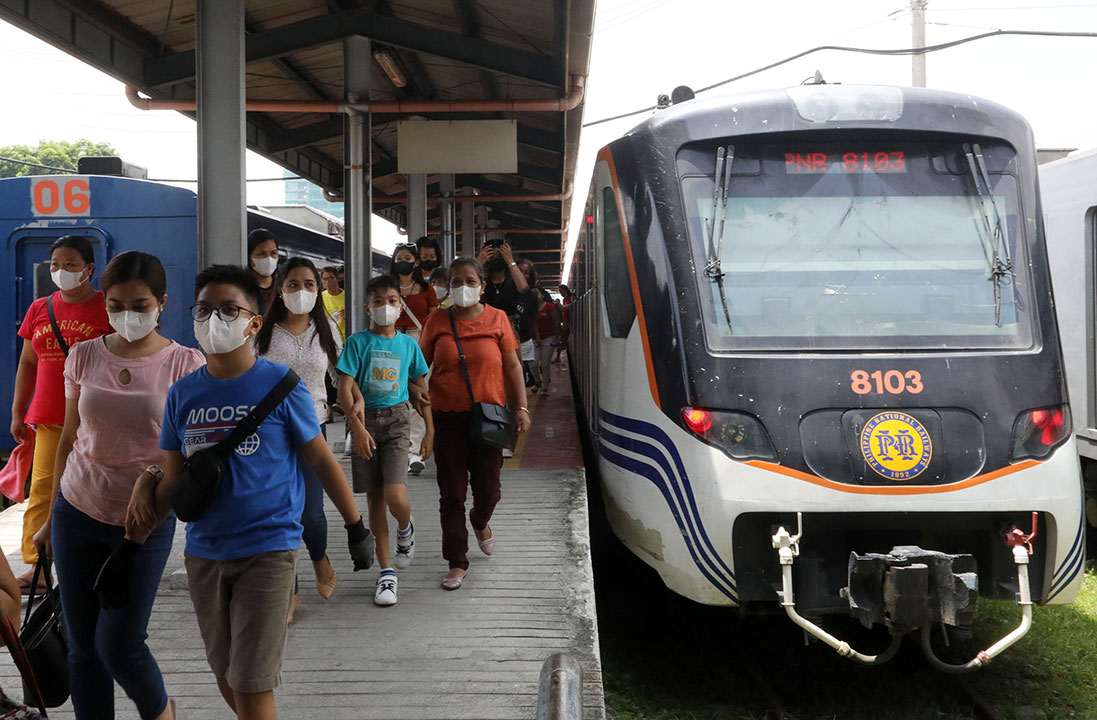




Monthly Economic Update: One for the road
 DOWNLOAD
DOWNLOAD

Inflation Update: Still low, still slow
 DOWNLOAD
DOWNLOAD

Philippines Trade Update: Exports momentum continues
 DOWNLOAD
DOWNLOAD


AMRO trims 2023 PH growth outlook

Philippine gross domestic product (GDP) growth is likely to fall slightly below the government’s target this year, the ASEAN+3 Macroeconomic Research Office (AMRO) said.
“The Philippines’ economic growth is projected to moderate to 5.9% in 2023 due to high base effects and weaker external demand, before edging up to 6.5% in 2024 as external demand recovers,” AMRO Group Head and Principal Economist Runchana Pongsaparn said in a statement on Tuesday.
Mr. Pongsaparn was part of the AMRO team that visited Manila from Aug. 29 to Sept. 8. for its annual consultation.
“Meanwhile, domestic demand is expected to remain robust supported by continued improvement in labor market conditions, lower inflation, robust overseas remittances, and higher government infrastructure spending,” he said.
The think tank’s latest 2023 GDP forecast is lower than the 6.2% it gave in its Regional Economic Outlook Report in July. It also falls below the government’s 6-7% GDP target.
AMRO kept its Philippine growth forecast for 2024 unchanged at 6.5% amid an expected recovery in external demand. This is at the lower end of the government’s 6.5-8% target for next year.
The think tank noted the Philippine economy continued to show strong growth momentum in the first half of 2023. Philippine GDP expanded by a weaker-than-expected 4.3% in the second quarter, bringing the first semester growth to 5.3%.
“Growth was supported by resilient domestic demand with a strong recovery in the labor market despite weaker external demand. Notwithstanding a widening current account deficit, external position remains sound with sufficient international reserve buffer and low external debt,” AMRO said.
AMRO also said Philippine full-year inflation will likely settle at 5.5% this year before slowing further to 3.8% in 2024.
“Despite some moderation, inflationary pressure will likely remain elevated as reflected in the high level of core inflation, due to a positive output gap and the second-round effects induced by increases in the minimum wages and expectations of persistently high inflation,” it added.
Meanwhile, AMRO flagged risks to the Philippines’ growth outlook such as elevated inflation, local supply shocks, an economic slowdown in major trading partners and global financial market volatility.
“The long-term growth potential is largely affected by the scarring effects of the pandemic, the pace of infrastructure development, geopolitical risks, and the economic losses from natural disasters, which are being exacerbated by climate change,” it said.
Among AMRO’s policy recommendations to boost growth include upskilling the workforce, implementation of policies to attract investments and promote exports of goods and services. The government can also improve the Philippines’ competitiveness through infrastructure investment and digitalization, it added.
For the medium and long term, AMRO said “fiscal policy should balance between restoring fiscal buffer and supporting sustainable growth and development.”
The think tank said close coordination between regulators will be crucial in identifying and mitigating financial stability risks that may arise from nonfinancial firms.
“Meanwhile, the authorities should continue to improve the liquidity management framework, develop the bond and repo markets, and continue to expand financial inclusion, to enhance the system’s resilience to shocks and promote market activities,” it added. — Luisa Maria Jacinta C. Jocson
This article originally appeared on bworldonline.com





 By BusinessWorld
By BusinessWorld